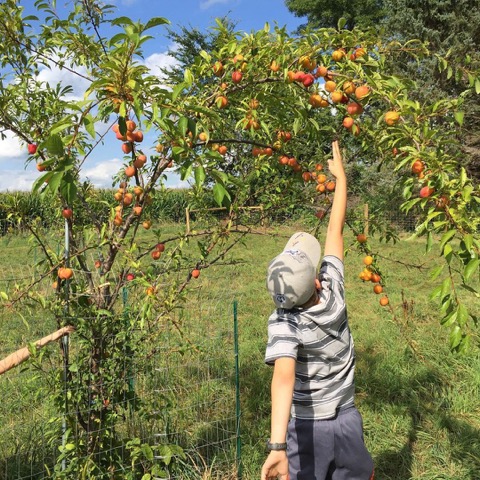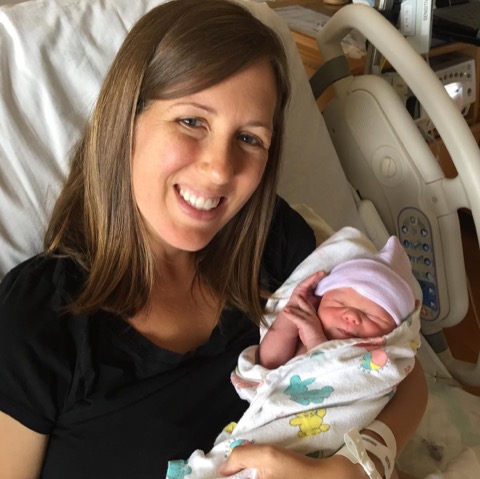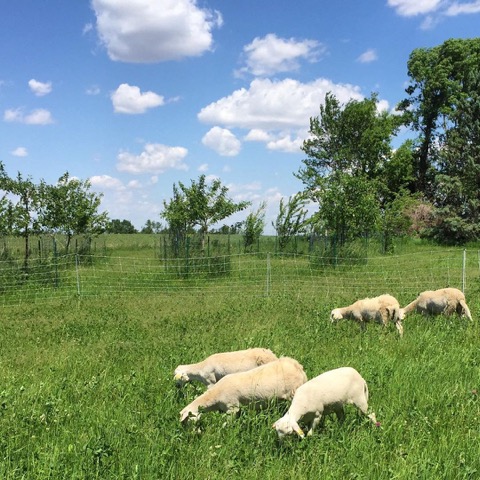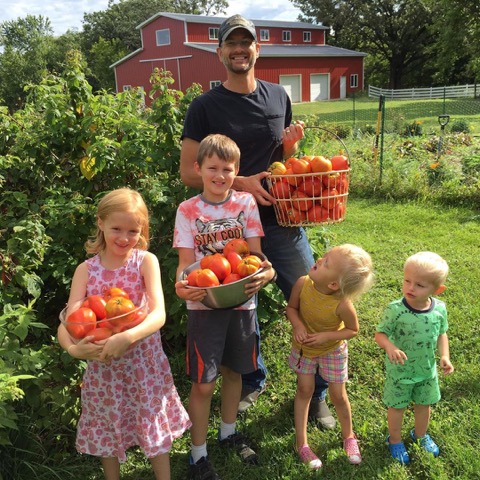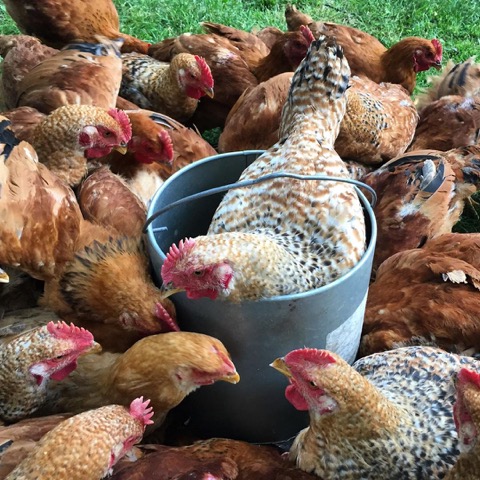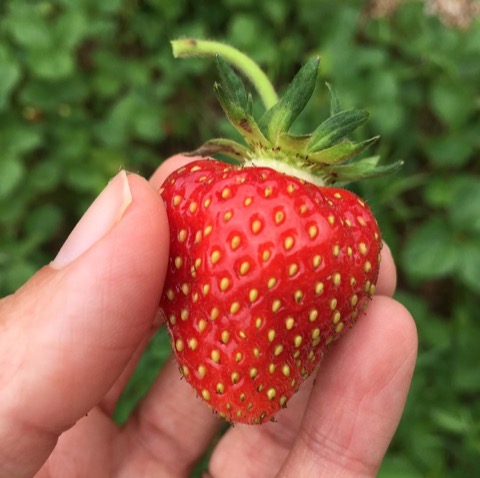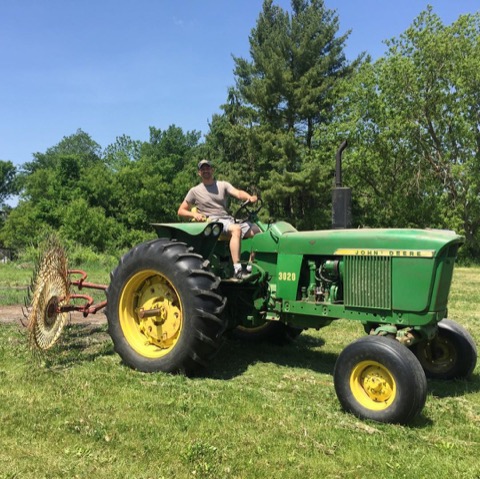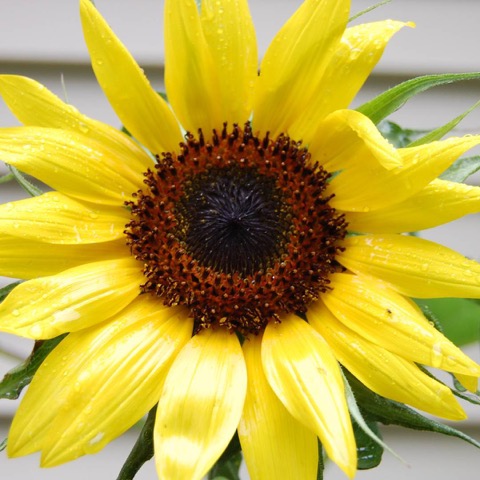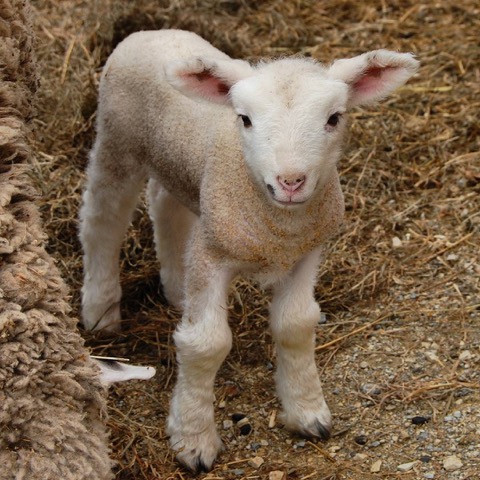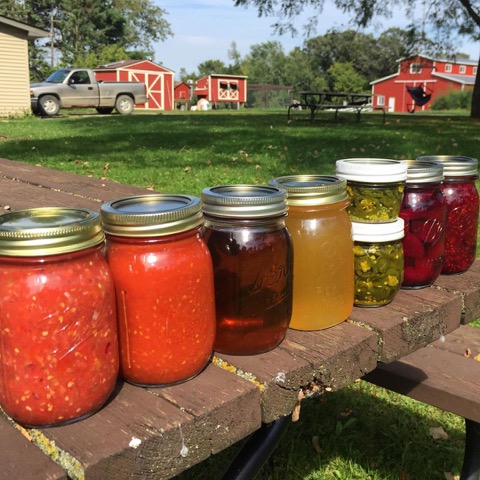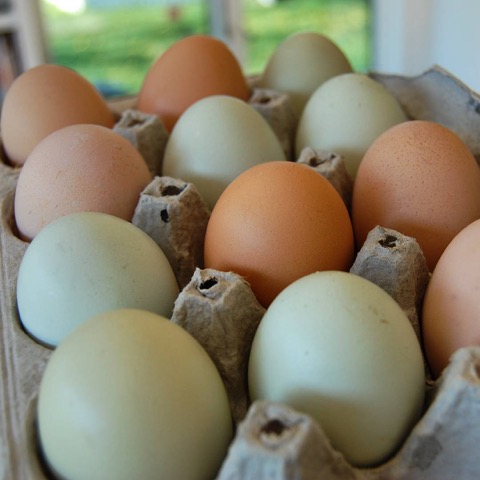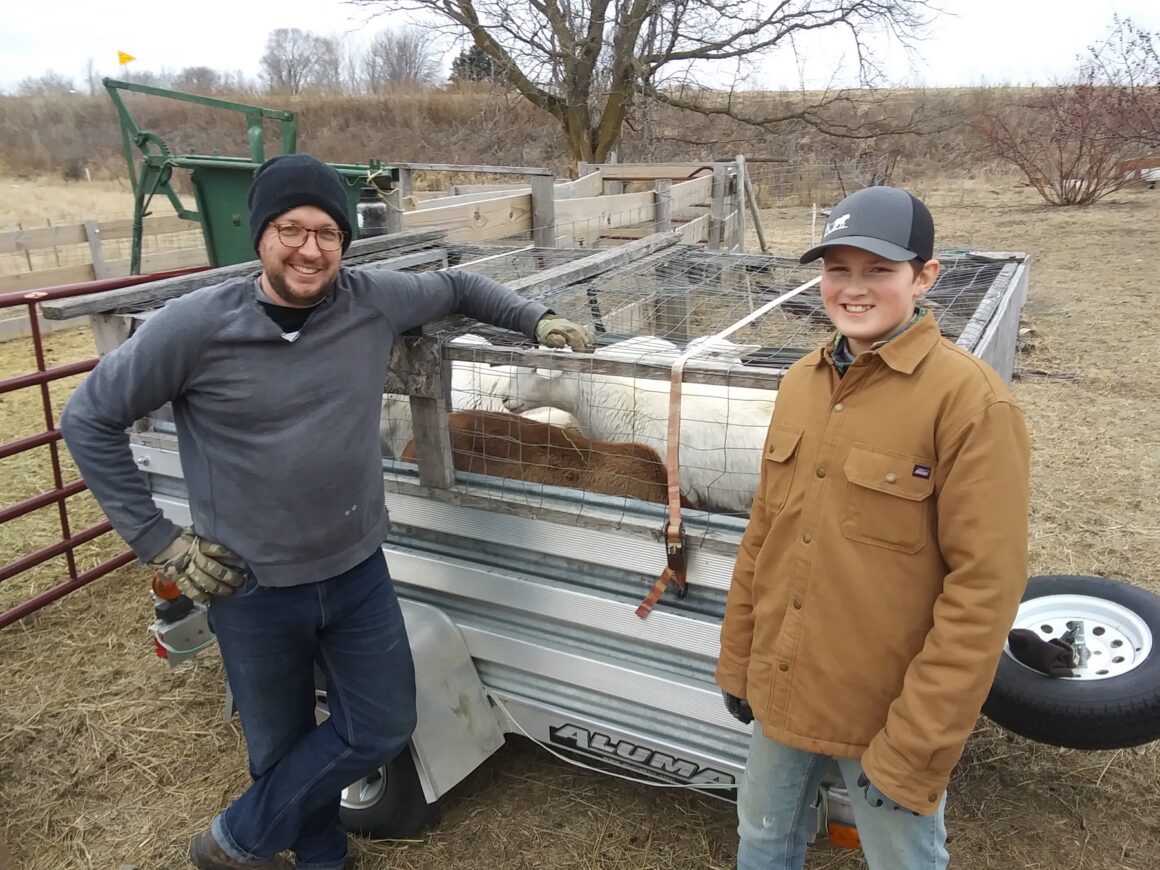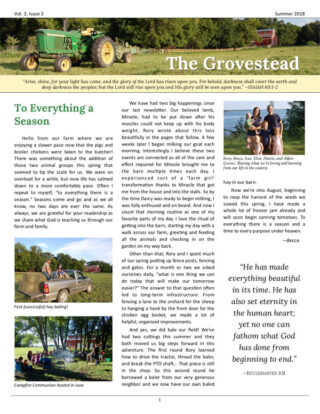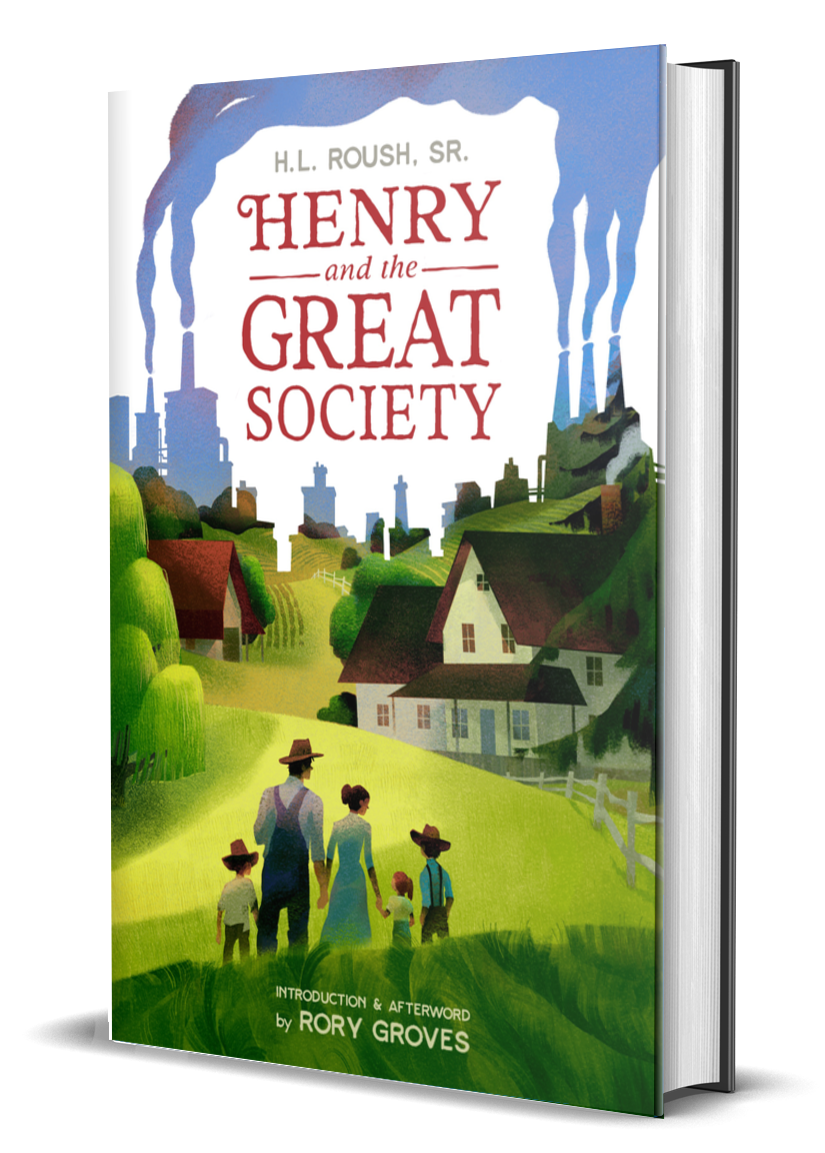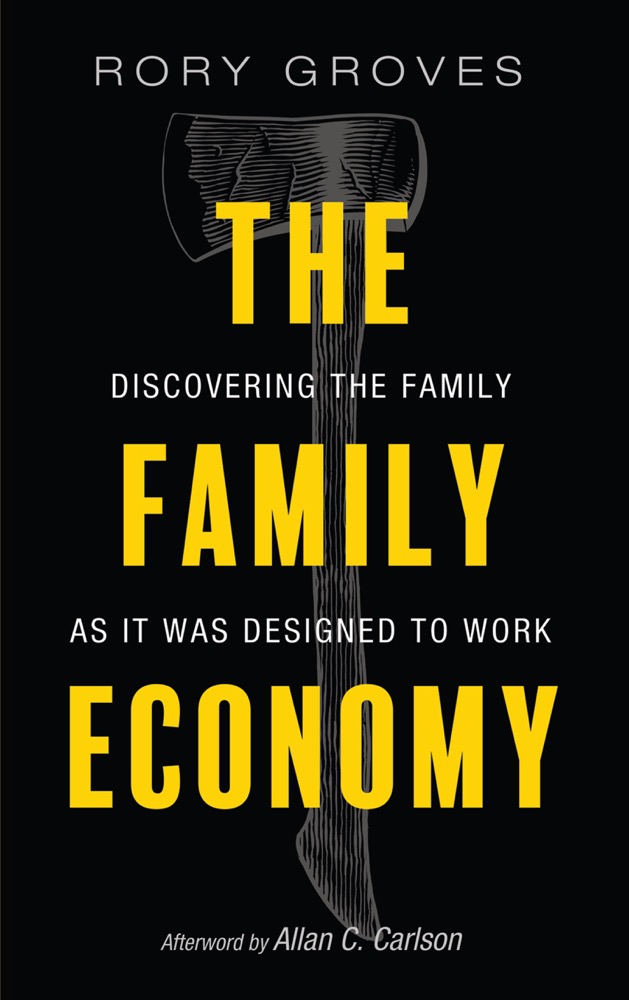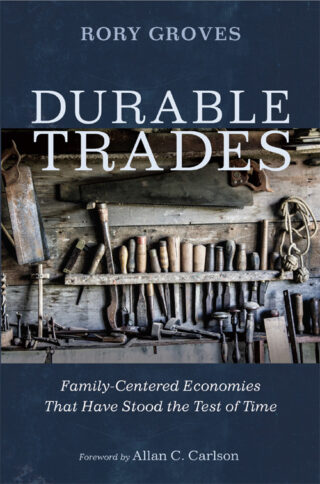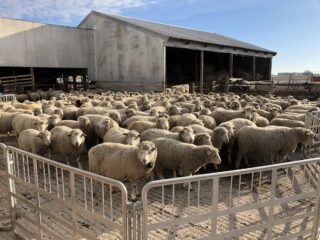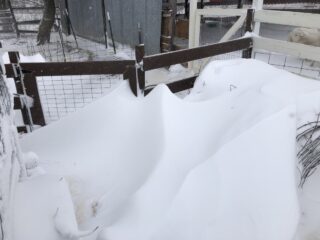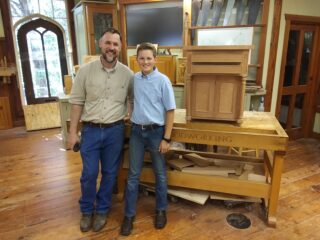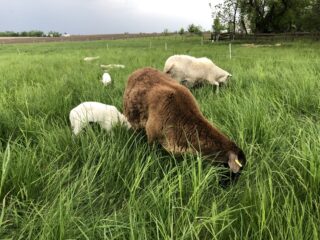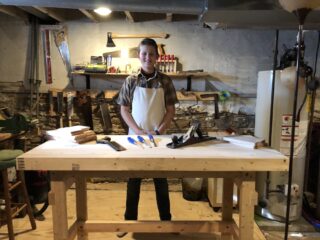A few years ago, we had a big brown Katahdin ram that we bought from a farm in Wisconsin. He was a great ram, and he bred every one of our ewes (female sheep) for three years in a row. Well, we ended up keeping some of his daughters to add to the flock, so the big brown ram had to go. We put a post up on craigslist and a few weeks later someone came and bought him, as well as one of our ewes. After they left, we got another inquiry about the ram from a man named Peter Burkel. He apparently knew something about sheep, because he asked if any of the ram’s sons were available after hearing that the ram was sold. Well, it was January, and we don’t lamb until May. But, sure enough, five months later he came out and bought one of our ram lambs.
Peter has been raising Katahdin/Saint Croix sheep for several years with the intent of creating “bulletproof sheep”… Sheep that are extremely hardy—can stand up to heat, cold, and parasites— while being exceptional mothers with big lambs. However, this doesn’t just happen automatically. There has to be a tremendous amount of work, culling (getting rid of the sheep that are not top performers), and determination in order to achieve the results he has and is striving for.
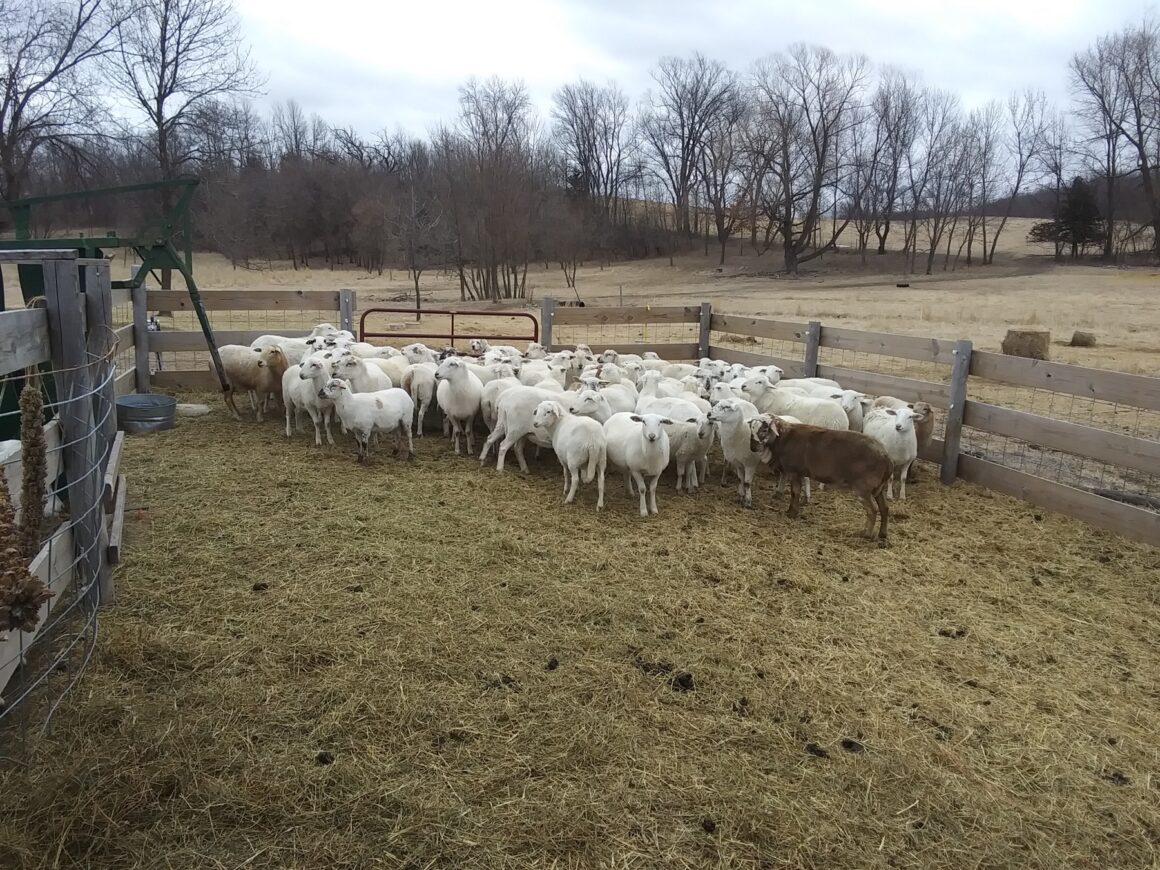
Peter’s foundational stock came out of Greg Judy’s farm in Missouri, and in the same way that Greg raises his livestock, Peter raises his sheep and cattle… All on grass. Not a kernel of grain. And I, from experience, know how hard it is to get lambs big enough for butchering on grass alone. But, by rotational grazing and intentional breeding, Peter is raising massive lambs.
So, me and my dad decided, what could be better for our sheep than raising them the way Peter does? That was two years ago. We have since converted our “tired” hayfield that was being cut for winter hay into a thriving pasture (don’t get me wrong… we still have a long way to go) where we intensively rotational graze our sheep, while breeding and culling to improve the flock. I will talk more about breeding, culling, and grazing for hardiness and parasite resistance in my next blog, Raising Hardy Sheep.
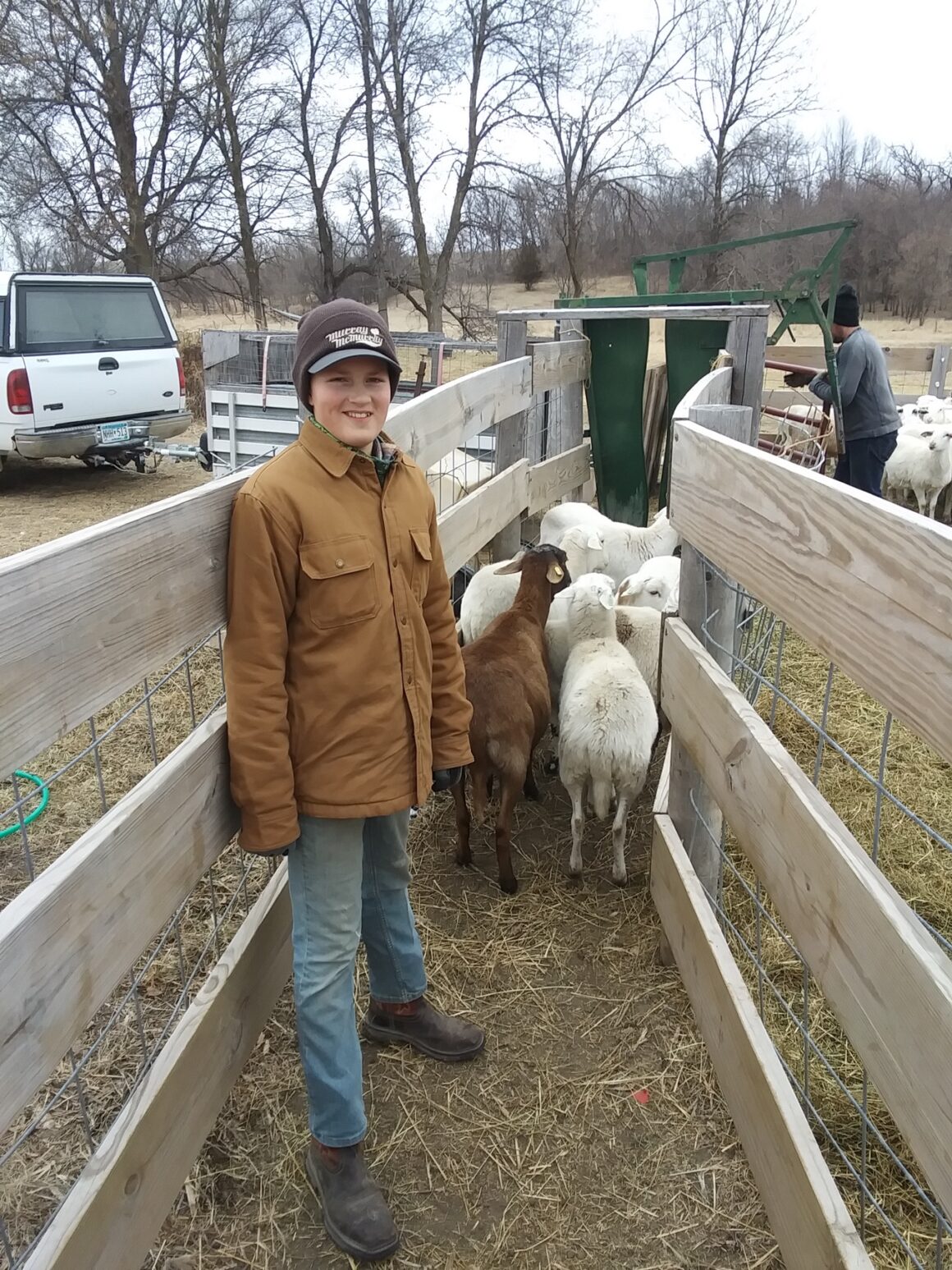
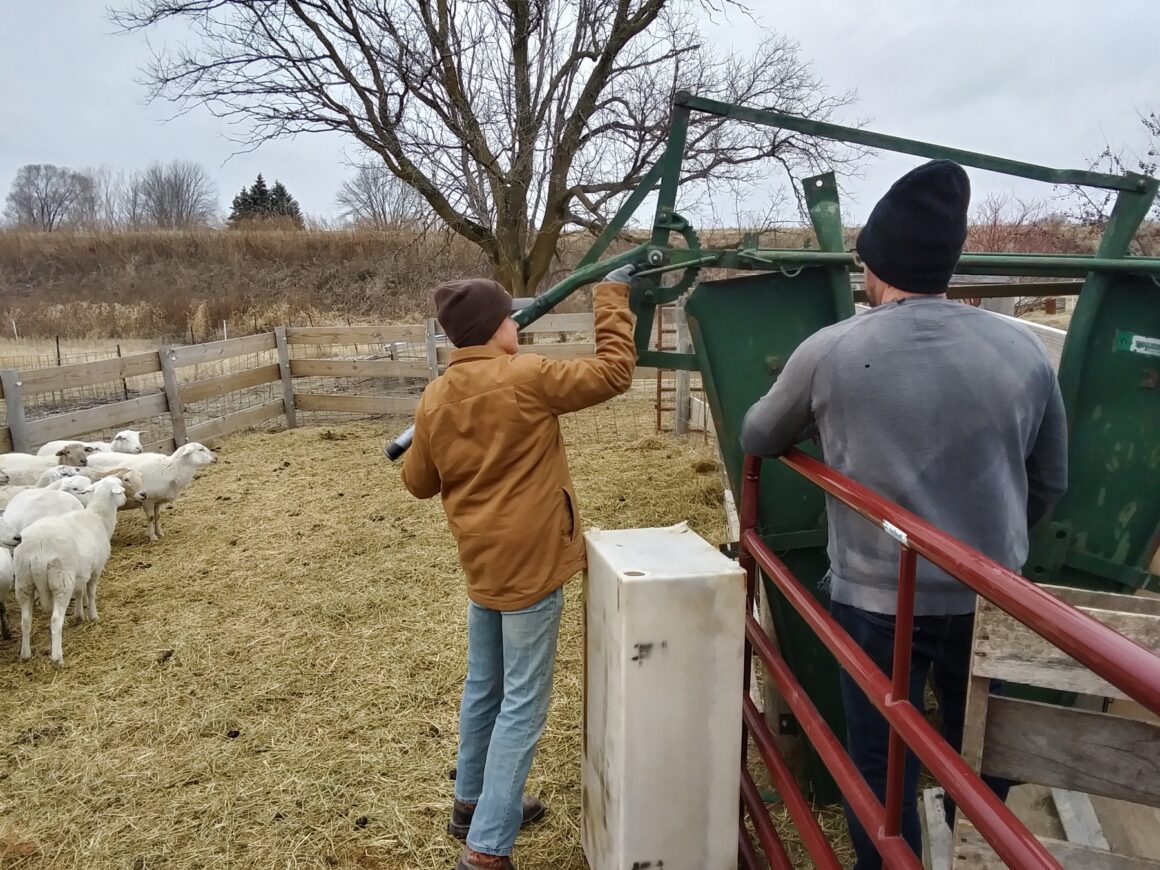
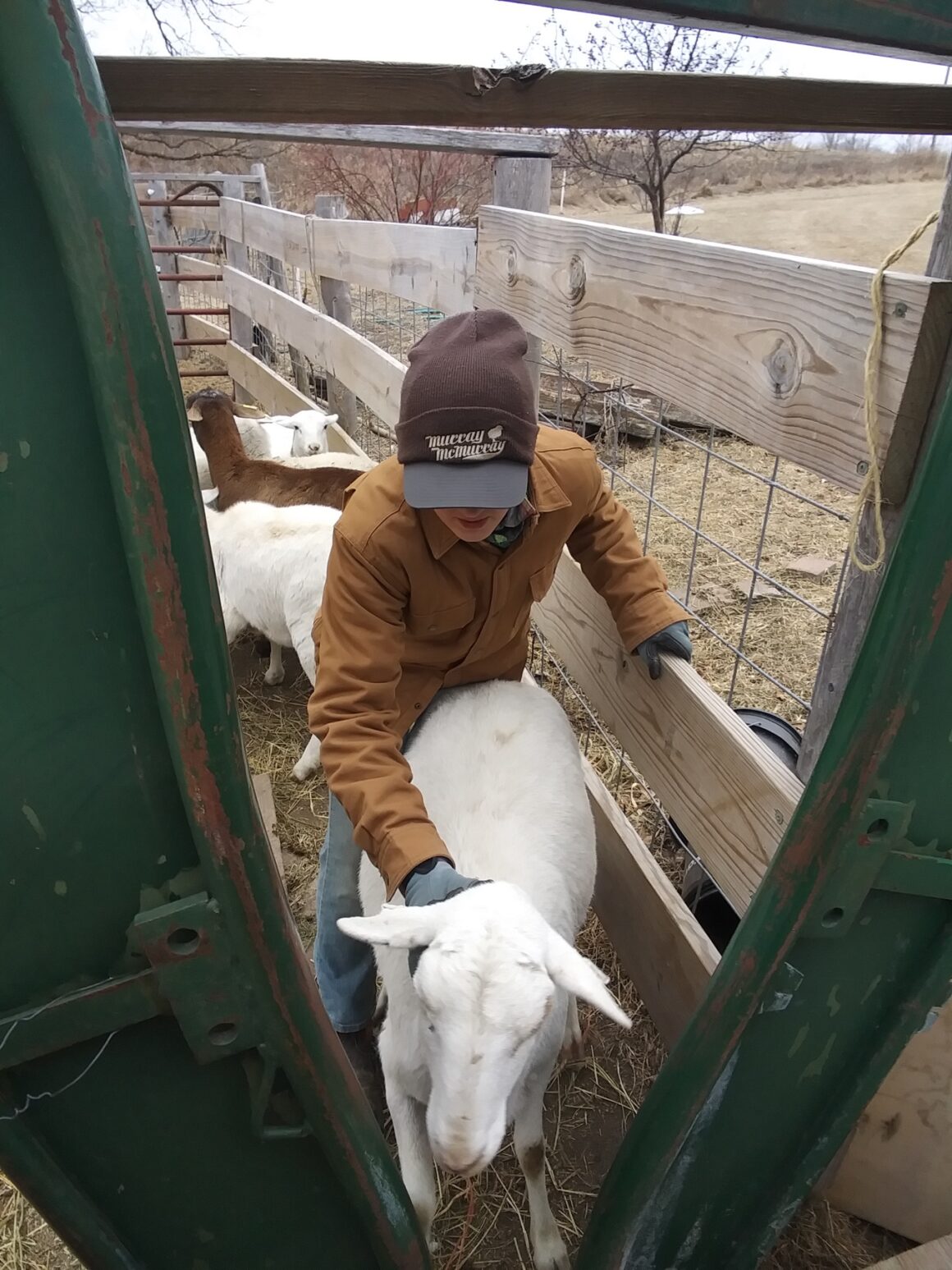
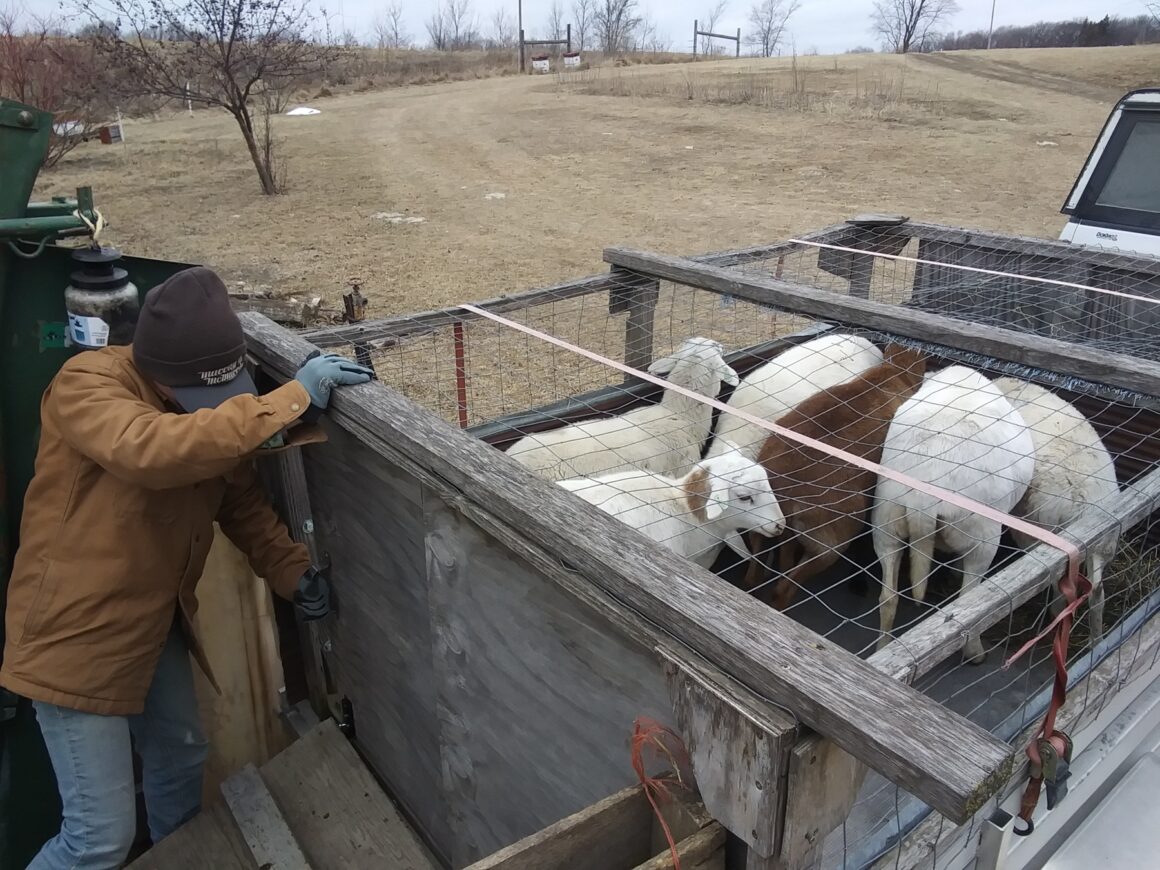
One of the greatest benefits of our relationship with Peter has been access to his rams. We were over at his place one time and he suggested bringing our ewes over to his (much larger) flock during breeding season, since it’s a lot of hassle to keep a ram year-round with only 5 to 6 ewes. And so, out of his generosity, we’ve had our ewes bred at his farm the past two winters, which has been a tremendous blessing to us. Just last week, we went out to his farm to pick up my six ewes that had been there since December. While we were there Peter taught me how to move sheep around in tight areas by grabbing under their chin, and turning their head to the side. They will instinctively move whichever direction their heads are turned.
Peter is a wealth of knowledge when it comes to sheep and grazing, and I am very grateful for the relationship we have with him, going back to that big brown ram we had 2 1/2 years ago.
